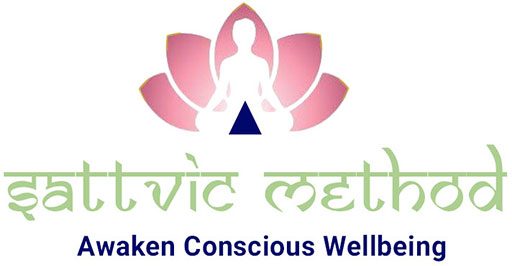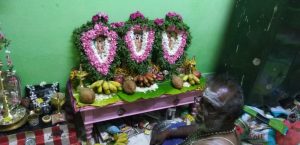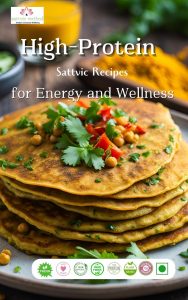A reader of the Sattva Tattva #blog sent me this question: Is sugar sattvic? What are the best sugars for a sattvic diet?
There are many ways we get sugar in our daily diet. An average American consumes about 270 calories of sugar each day, that’s about 17- teaspoons a day. This is way higher than 12 teaspoons per day (less than 200 calories). Preference for sweet foods is cultivated as ‘sweet tooth.’ We take sugar in almost everything from #coffee, #tea, #lemonade, or sprinkle over baked goods. We eat sugar in #jam and jellies. Many of us love #doughnut with sprinkles or sweet tea bread. We consume sugar as raw sugar, as infused in baking or cooking.
Sometimes sugar is hidden or invisible. Every processed food has so much sugar hidden in it. If we take a moment to read the nutrient labels of #sauce, #ketchup, #salsa, or anything processed, we will find hidden #sugar in these recipes as well. These sugars are used to balance the flavor and taste of the recipes. Sugar is also used in unexpected ways in salty treats.
#Fruits also contain sugar. One #mango has about 45 grams of sugar, one cup of #grapes has 23 grams of sugar, a cup of #cherries has 18 grams of sugar, while a single pear has 17 grams of sugar. Even fruits such as #watermelon, figs, and #banana have plenty of sugar. The fruit sugar or fructose, found in fruits and honey, is quickly absorbed into the #blood during digestion.
Many people, notably with #diabetes, avoid in taking natural sugar altogether and rely on artificial sweeteners. Saccharin, acesulfame, aspartame, neotame, and sucralose are the five artificial sweeteners approved by the Food and Drug Administration (FDA). One natural low-calorie sweetener, #stevia, has also been approved by the FDA.
Whenever we eat sugar, it disrupts the body function in many ways. Sugar gives the brain a surge of feel-good #chemicals called Dopamine. Our brain treats refined sugar as an addictive drug like heroin. Sugar alters the #mood and changes the brain chemistry, causing moods to ‘crash’ or ‘swing.’ Here are few other health effects of consuming more sugar—
- Sugar intake increases the risk of obesity, heart disease, and diabetes
- Bacteria and yeast feed on sugar causing infection
- High-sugar diets have been linked to various forms of cancer
- Sugar causes tooth decay and gum diseases
- High sugar causes the skin to develop wrinkles and sagging, accelerating aging
- Consuming sugar increases stress
- In children, decreasing sugar in the diets leads to enhanced cognition abilities
- When sugar intake is high, our body fails to absorb vitamins A, C, B-12, and calcium
- High sugar diet causes high triglyceride to increase in the body which can lead to heart disease
Most of the sugars available in the market today are not sattvic. They are processed or purified over animal bones. Only raw, unrefined cane sugar and jaggery are usually used in sattvic cooking. Jaggery is processed, but unrefined cane sugar. Jaggery from palm tree sap is also allowed in some recipes.
Although it may not be widely known, India has a long and ancient history of sugarcane cultivation. Sugar from cane was exported to many countries, including the middle east and China, well before the middle ages. Historical records show that experts from India traveled to China, the middle east, and other parts of the world connected by trading routes sharing the knowledge of sugar cultivation and trading sugar. Thus, the sattvic diet has a full and clear foundation of how sugar may be used and how sugar interacts with the human body.
Traditional sattvic diet does not permit sugar consumption daily. Jaggery is used in small quantities to sweeten coffee, tea, or lemonade, if one does need sweetener beverage. Some traditional recipes that include jaggery are Chakkarai Pongal, Payasam, Kicchadi, Appam, Adhirasam, Uthir puttu etc.
Sattvic diet sweet treats are eaten in a specific order- at the beginning of a meal and in the middle of the meal. Sugary treats are usually cooked with fat such as ghee or plant-based oil in Appam, Chakkarai Pongal, or Adhirasam. In Uthir puttu, the jaggery is boiled to a syrup, and the rice powder is mixed with it. Addition of ghee in a signature of sattvic food as it increases intelligence, intellect, and memory.
The practice of consuming sugar in a sattvic meal are as follows:
- Sweets are always served with lunch, never eaten as a stand-alone meal.
- Other recipes include ingredients such as tamarind, turmeric, and starch served in the course of meal blunt the effect of sugar absorption in the system. Tamarind, for example, stimulates the activity of bile and detoxes the liver. Bile helps to digest food quickly speeding up digestion and decreases the accumulation of serum cholesterol concentration. Turmeric helps to manage low blood sugar levels.
- The meal ends with buttermilk or yogurt. Research shows that eating dairy foods at the end of the meal is the best way to increase digestion and decrease bloating.
Best times to eat sugar—
- Recipes that have added sugar needs to be eaten at lunchtime. Avoid added sugar recipes over breakfast or dinner. Sugary snacks or treats should be avoided. Restrict your sugar cravings to afternoon lunch. Avoid sweet yogurt for morning treats, trade it for fruits that are rich in natural sugars.
- If you need to sweeten your freshly squeezed lemonade, add honey or jaggery and a pinch of salt. Keep the drink simple and fresh.
- Eat recipes with added sugar after a period of fasting or during intermittent fasting.
Here are sattvic sugar sources in your diet-
- Organic jaggery
- Organic unrefined cane sugar
- Organic honey
- Organic fruits that are rich in sugar
- Organic dates
If you are using honey, make sure it is dissolved in lukewarm water. Here is a blog post about honey.
For sattvic cooking recipes with added sugar, try the following:
Chakkarai Pongal https://youtu.be/K2cPVIdYWIM
Payasam https://youtu.be/6iAHTUijtSM
Eggless cake https://youtu.be/hO1X4ewT-6k
Fruit crumble https://youtu.be/JATqmNj1YwQ
Milk peda https://youtu.be/TOeAz0sHh-E
Try recipes from our sattvic Pongal treats book or make #desserts without cooking from our no-cook #cookbook.
Have any #questions #comments please leave them below. #Subscribe to our #website for updates and YouTube #channel for new #recipes and #lifestyle.



